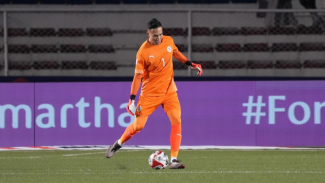Andrey Sakharov, Nuclear Bomb Maker Turns as Human Rights Activist
- BILD
VIVA – Andrey Sakharov, in full Andrey Dmitriyevich Sakharov known as a Soviet nuclear theoretical physicist and also an outspoken advocate of human rights, civil liberties, and reform in the Soviet Union as well as rapprochement with noncommunist nations.
In 1975 he was awarded the Nobel Prize for Peace. He was born into the Russian intelligentsia. He was tutored at home for several years and entered school only in the fall of 1933. His exceptional scientific promise was recognized early, and in 1938 he enrolled in the physics department of Moscow State University.
After the outbreak of war with Germany in June 1941, he failed a medical exam and was found unfit for military service. In October he and his fellow students were evacuated to Ashkhabad (now Ashgabat, Turkmenistan), the capital of the Turkmen Republic in Central Asia, where they resumed their studies and graduated in 1942.
He contributed to the war effort by working in the laboratory of a munitions factory in Ulyanovsk. While working there, he met Klavdia Vikhireva, and they were married in July 1943, a marriage that lasted until she died in 1969. They had three children: Tanya, Lyuba, and Dmitry.
Andrey Sakharov.
- TASS
After that, in 1942, they returned to Moscow, where Sakharov began his graduate work at the P.N. Lebedev Physics Institute of the Soviet Academy of Sciences (FIAN) under the direction of Igor Y. Tamm, earning his doctorate in two years.
In June 1948 Tamm was appointed to head a special research group at FIAN to investigate the possibility of building a thermonuclear bomb. Sakharov joined Tamm’s group and, with his colleagues, Vitaly Ginzburg and Yuri Romanov worked on calculations produced by Yakov Zeldovich’s group at the Institute of Chemical Physics.
The Soviet discovery of the major ideas behind the thermonuclear bomb went through several stages. Later in 1948, Sakharov proposed a design in which alternating layers of deuterium and uranium are placed between the fissile core of an atomic bomb and the surrounding chemical high explosive.
The scheme analogous to American physicist Edward Teller’s “Alarm Clock” design was called Sloika, or “Layer Cake” as it is usually translated. Sakharov referred to it as the “First Idea.” Sakharov credits Ginzburg for the “Second Idea.”
Then, in 1949 Ginzburg published reports proposing substituting lithium deuteride for the liquid deuterium. When bombarded with neutrons, the lithium yields tritium, which when fused with the deuterium generates a greater release of energy.
In March 1950 Sakharov arrived at the “Installation” (KB-11 and later Arzamas-16), located in what became the secret Soviet city of Sarov. Under the scientific leadership of Yuly B. Khariton, work at KB-11 had begun three years earlier to develop and produce Soviet nuclear weapons.
Members of the Tamm and the Zeldovich groups also went there to work on the thermonuclear bomb. A Layer Cake model, small and light enough to be deliverable by airplane, was detonated on August 12, 1953, with a yield of 400 kilotons.
Sakharov was rewarded with full membership in the Soviet Academy of Sciences at age 32 and accorded the privileges of the Nomenklatura, or elite members of the Soviet Union. While the 1953 test was a significant milestone in thermonuclear development, it was not based on the most advanced principles, and further work continued.
In the late 1950s, Sakharov became concerned about the consequences of testing in the atmosphere, foreseeing an eventual increased global death toll over time.
After years of attempts at private persuasion, in 1961 Sakharov went on record against Soviet Premier Nikita S. Khrushchev’s plan for an atmospheric test of a 100-megaton thermonuclear bomb, fearing the hazards of widespread radioactive fallout. The bomb was tested at half yield (50 megatons) on October 30, 1961.
Through these efforts, Sakharov began to adopt strong moral positions about the social responsibilities of scientist.





























